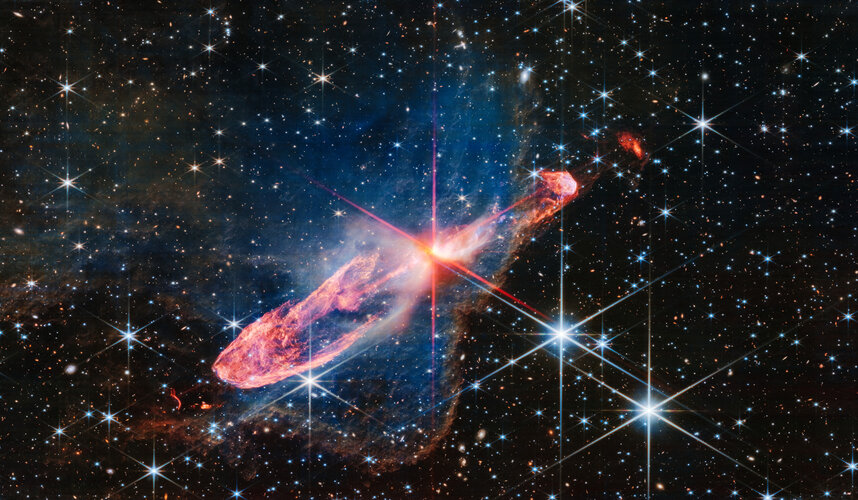The NASA/ESA/CSA James Webb Space Telescope has captured the ‘antics’ of a pair of actively forming young stars, known as Herbig-Haro 46/47, in a high-resolution image in near-infrared light. This is the most detailed portrait of these stars, which reside only 1470 light-years away in the constellation Vela, to date.
To find the pair of young stars, trace the bright pink and red diffraction spikes in the image until you hit the centre: the stars are within the orange-white splotch. They are buried deeply in a disc of gas and dust that feeds their growth as they continue to gain mass. The disc is not visible, but its shadow can be seen in the two dark, conical regions surrounding the central stars.
The pair of actively forming stars has sent out jets in two directions for thousands of years. Although Herbig-Haro 46/47 has been studied by many telescopes, both on the ground and in space, since the 1950s, Webb is the first to capture them at high resolution in near-infrared light. With Webb, we can now understand more of the stars’ activity – past and present – and peer through the dusty blue nebula, which appears black in visible-light images, that surrounds them. Over time, researchers will be able to glean new details about how stars form.
Click here for an annotated image
[Image description: At the centre is a thin horizontal orange cloud tilted from bottom left to top right. It takes up about two-thirds of the length of this angle, but is thin at the opposite angle. At its centre is a set of very large red and pink diffraction spikes in Webb’s familiar eight-pointed pattern. It has a central yellow-white blob, which hides two tightly orbiting stars. The background is filled with stars and galaxies.]



 Image:
Webb snaps detailed infrared image of actively forming stars
Image:
Webb snaps detailed infrared image of actively forming stars